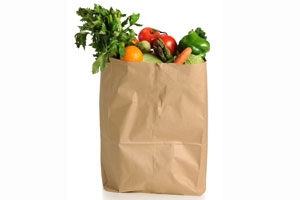Some people just
can’t tolerate a multivitamin pill due to nausea, medication interactions, or
some other health issue. Personally, I often forget to take mine. Relying on a nutritious diet to provide the vitamins and minerals your body needs is key to optimum health. Try to
include foods from the different food groups to ensure you are receiving all of
the nutrients your body needs. Most foods supply our bodies with multiple vitamins and minerals. When someone tells you to eat your vegetables, it is not just because we are "supposed" to, it's because they benefit our health in so many ways. You can see below that leafy greens provide us with an array of nutrients - calcium, iron, folate, vitamins A and E, just to name a few.
Multivitamin Nutrients, health
benefits and food sources:
·
Calcium
o
Bone
growth and strength, blood clotting, muscle contractions, transmission of nerve
signals
o
Dairy
products, calcium-fortified products (juice, soy), canned salmon with bones,
turnip greens, kale, cabbage, broccoli, some tortillas and breads
·
Iron
o
Key
component of RBC and enzymes – strong blood carries oxygen throughout the
entire body, protects immune system, keeps energy levels up, ensures adequate
growth and development
o
Beef,
dark poultry meat, clams, dried fruit, beans (white, kidney, garbanzo, etc),
lentils, dark leafy greens (spinach, collards, chard, kale, mustard), enriched
cereals, breads, and rice, prune juice, tofu, egg yolks
·
Folate/Folic
Acid
o
Development
of cells, protein metabolism, heart health, prevent birth defects in pregnant
women
o
Leafy
greens (spinach, turnip greens), oranges and orange juice, beans (legumes),
enriched breads, pasta, crackers, rice, cereals, beef liver, asparagus,
broccoli, avocado, peanuts, wheat germ, romaine lettuce, tomato juice,
cantaloupe, papaya, banana
·
Vitamin
C
o
Antioxidant
against cell damage, boosts immunity, forms collagen
o
Oranges,
grapefruit, bell peppers, strawberries, potatoes, broccoli, cabbage, guava,
kiwi, cantaloupe, papaya, tomato, cauliflower, mango
·
Vitamin
A
o
Promotes
healthy lining of the respiratory, urinary, and intestinal tracts, vision
health, boosts immunity, reproductive health
o
Carrots,
sweet potatoes, cantaloupe, spinach, pumpkin, greens, winter squashes (with
orange/yellow flesh), red sweet peppers, liver, fortified milk, cheese, egg
substitutes, fortified oatmeal, frozen peas
·
Vitamin
E
o
Antioxidant
against cell damage, involved in immune function, regulation of gene expression
o
Vegetable
oils, nuts and seeds (almonds, sunflower seeds, hazelnuts, peanut butter),
avocado, wheat germ, small amounts in broccoli, spinach, mango, tomato, and
kiwi
























